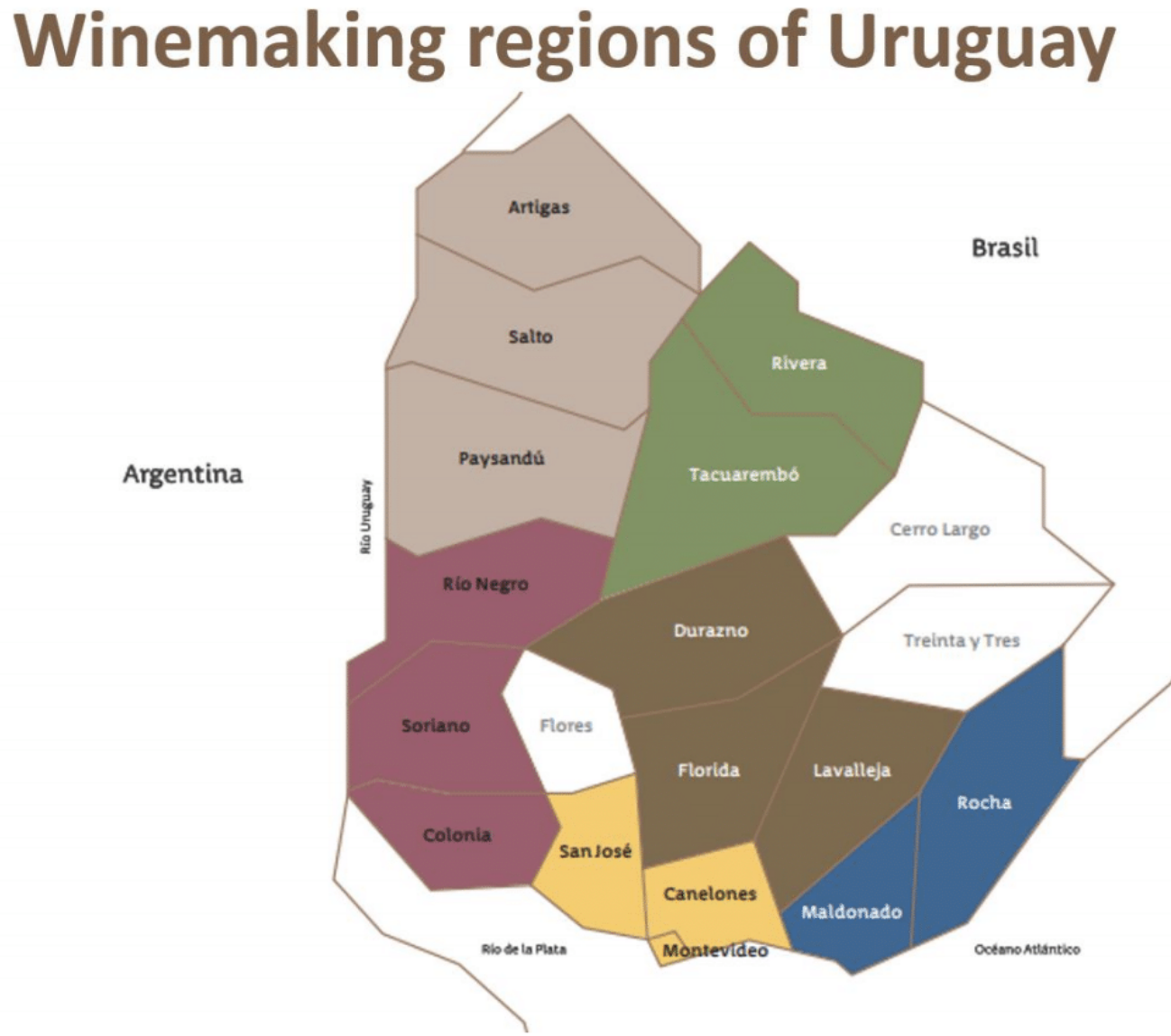Image from Creative Palate Communications (Used with Permission)
In Uruguay, the combination of three soil types (clay mixed with different original materials) and its relative proximity to the sea have created six distinct wine making regions:
Northern Shore (Light Tan): This terroir spans the departments of Artigas, Paysandú and Salto along the shore of the Uruguay River. This is a continental terroir, with a temperature range between day and night of up to 20 degrees, and high relative humidity. The soils range from river bed gravel to calcareous clay, with varying amounts of lime and sand. The Northern Shore region accounts for just under 3% of total surface area under vine at 408 acres.
Southern Shore (Burgundy). This region includes Colonia, Río Negro, and Soriano where the influence of the Uruguay River can be seen in the sedimentary soils of Carmelo while the San Juan River has created rockier ones. This region accounts for 5.2% of the area under vine in Uruguay.
Metropolitan (Yellow): This region is made up of San José, Canelones, and Montevideo. It houses two-thirds of the country’s wineries and boasts 83.4% of total surface area under vine at 12,076acres. The greatest determinant of the soils is the Río de La Plata, while the climate is maritime. The deep, clay soils also feature strips of pink granite and make for a terroir well-suited to growing Tannat. Due to the region’s long history, this is where the country’s other classic varieties, such as Cabernet Sauvignon, and Merlot, are grown.
Oceanic (Blue): The region includes Maldonado and Rocha. However, only the former is of importance, with 7.3% or 1,053acres under vine, while Rocha accounts for just 0.3% with47 acres. In this region, the changing orography (topographic relief of mountains) is important, with the Sierra de la Ballena reaching a height of 1,600 feet above sea level and contributing a mixture of granite and ballast to the soils, while the climate is oceanic. White grape varieties dominate here.
Center (Dark Brown): Here, Durazno, Florida, and Lavalleja are the most relevant in terms of area under vine, although they still only account for 0.7% of the total with 109acres. The soil and climate are similar to that of the Metropolitan area.
North (Green): Rivera and Tacuarembó comprise this region with vineyards here that are planted in different geological formations rich in iron. The climate is continental, with significant temperature ranges and the area experiences more hours of sunlight than elsewhere in Uruguay. Cerro Chapeu, which is 720 feet above sea level and borders Uruguay, is an area where sugars and color tend to be more concentrated. In all, it has 84aces of vines, or 0.6% of the total.
So, there’s a top-level summary of the various wine-growing regions of Uruguay. See more on Uruguay’s Tannat and White Wines and stay tuned for additional wines to be featured from Uruguay. Cheers!


